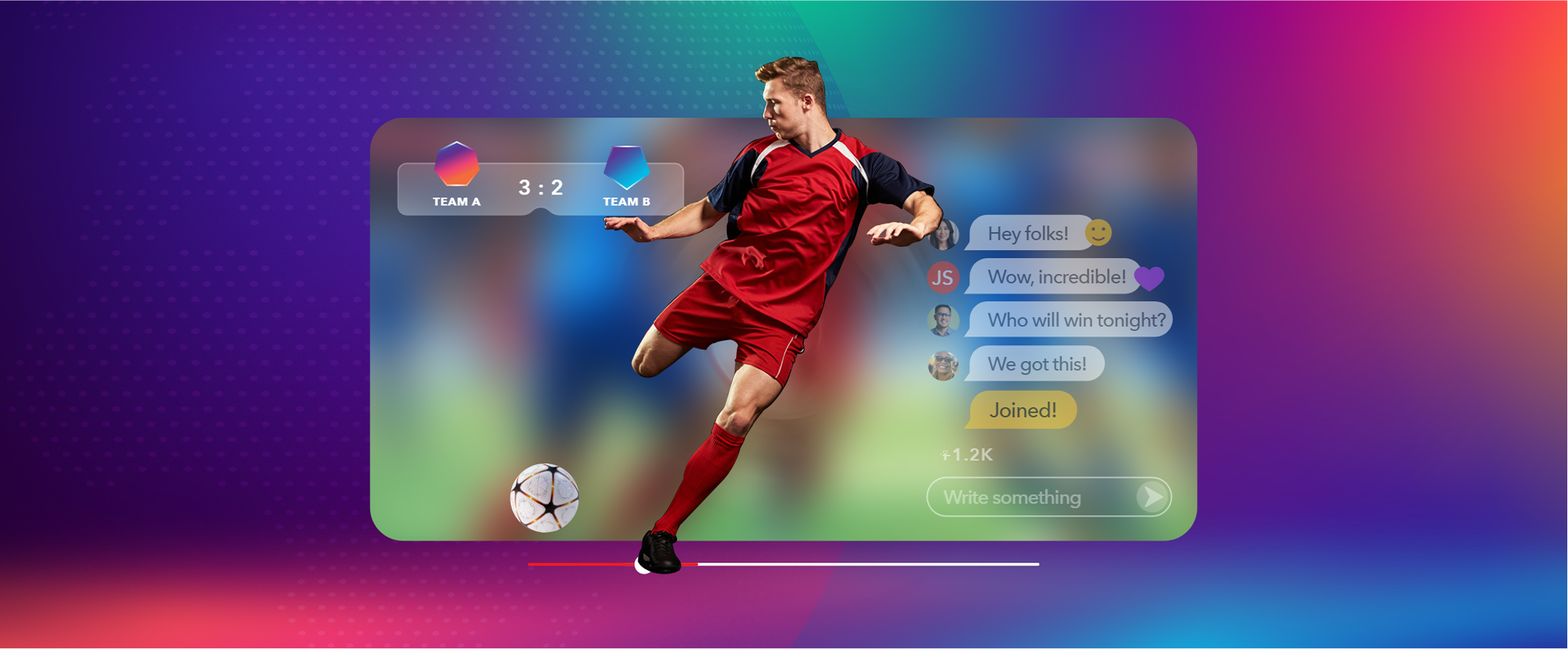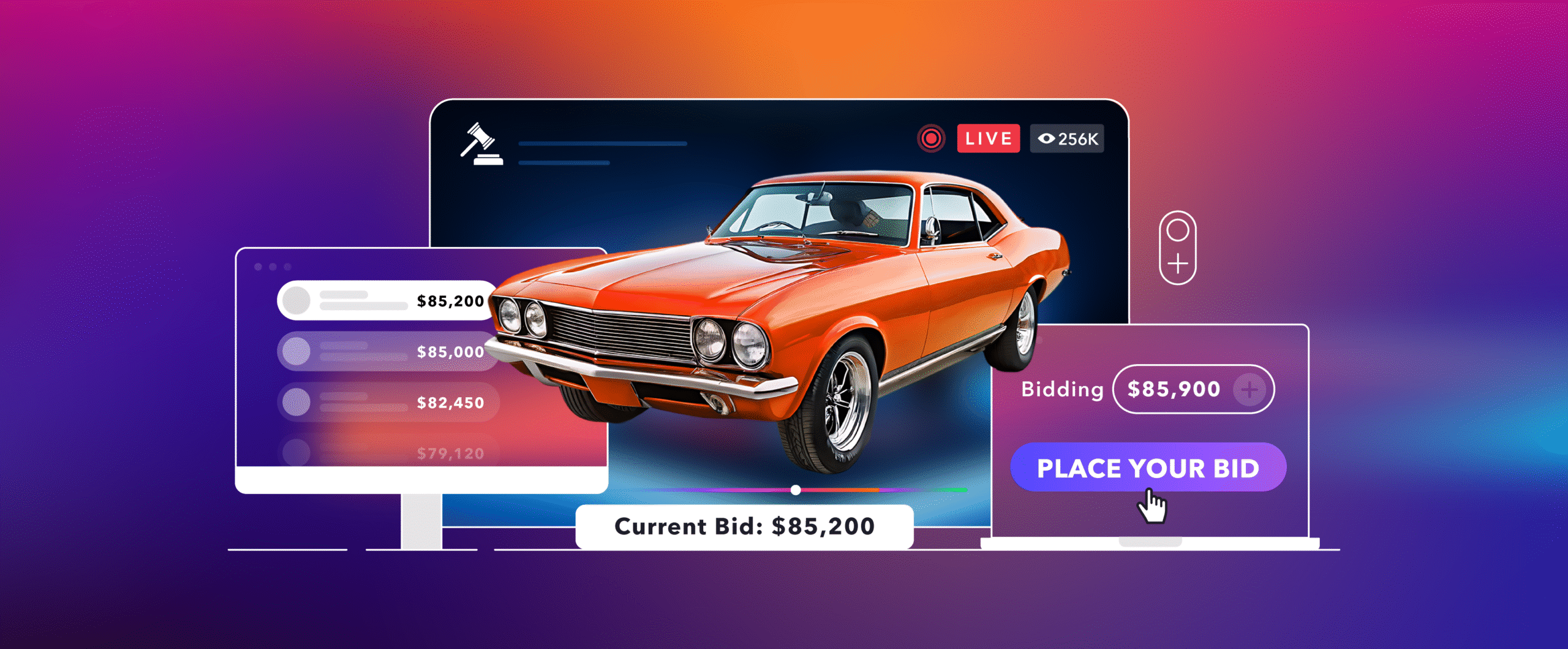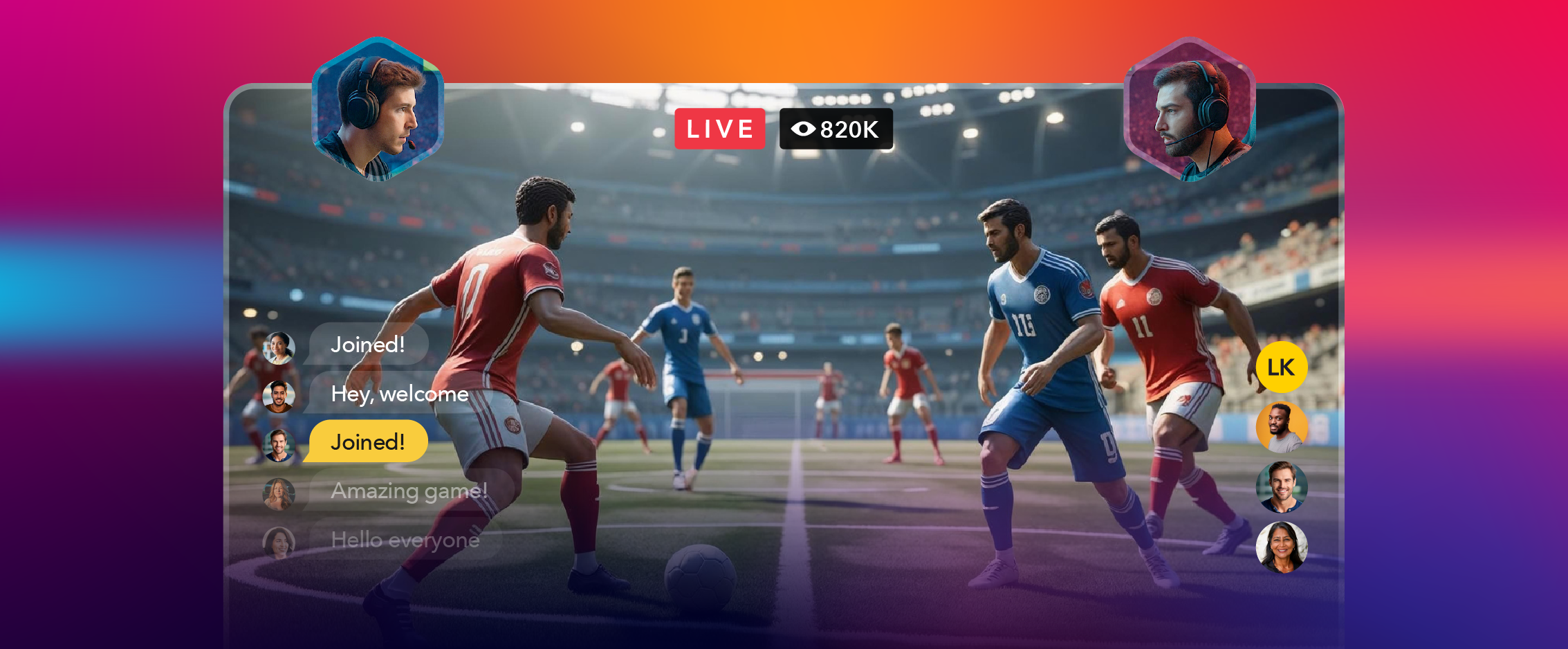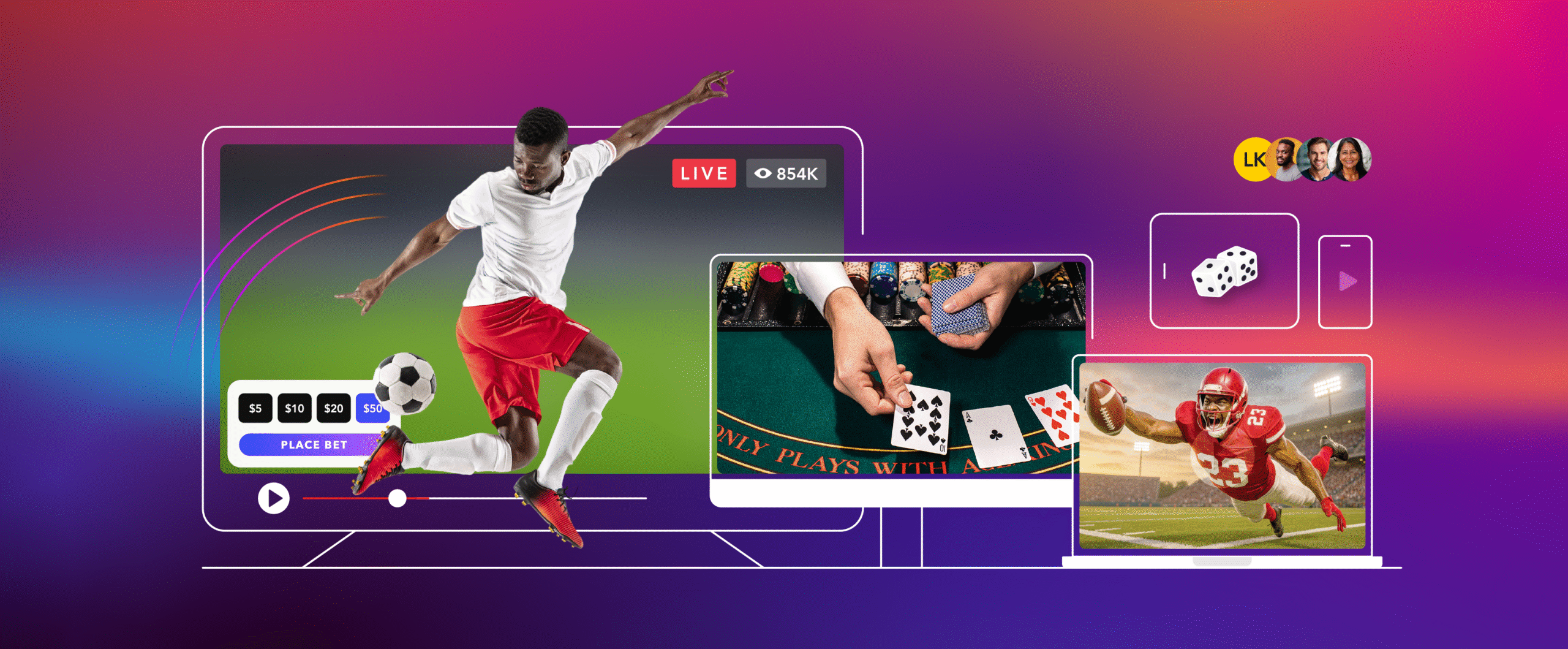Engaging your audience should be the top priority if you’re looking to enhance the user experience on your streaming platform. This is key to expanding your viewership, growing your business, and ultimately, generating more revenue.
Two of the top ways to boost your engagement are personalization and interactivity within your video content. When you couple the two, you can take your experiences to the next level.
In this article, we will discuss all things related to personalized interactive video. We’ll discuss what it is and the benefits it offers. From there, we will discuss how personalized interactivity works in video streaming and different options for incorporating it into your experiences.
To wrap things up, we’ll provide a step-by-step walkthrough of adding personalized interactivity to your video streams.
What is personalized interactive video?
Personalized interactive video is a type of data-driven media streaming that engages viewers with customized content and experiences based on their preferences. This creates a dynamic viewing experience that makes the content more engaging for each user.
Personalized video experiences can be as simple as addressing viewers by name or creating more immersive interactivity that directly addresses viewer preferences.
Some of the top use cases for personalized interactive video streaming include sports, entertainment, education, and sales.
Benefits of personalized video streaming
There are several benefits to personalized video streaming, particularly when it incorporates an interactive component. Let’s check them out.
Improves the customer experience
The most obvious benefit of adding personalized interactivity to video streams is supercharging the viewer experience. It adds a dimension that simply does not exist in the absence of either personalization or interactivity.
When you incorporate a layer of interactivity, personalization, or both into your streaming experiences, viewers come for more than just the content they are consuming. They seek a more immersive experience that draws them deeper into the content. Sometimes, this can make the content feel more lifelike, and in other instances, it can improve the level of entertainment.
Makes viewers feel seen
When you incorporate personalization in your streaming experiences, viewers feel seen. It tells them that you pay attention to their wants and needs well enough to cater to them.
When this attention to detail is incorporated into your content, viewers will truly feel appreciated. This is great for creating relationships with your audience and creating repeat viewership.

Creates more opportunities for engagement
When you serve personalized opportunities for interactivity, there is generally more appeal to the person on the other side of the screen. The customized CTAs, overlays, and other interactive features will compel them to engage more.
This is an excellent way to boost your engagement. Additionally, with more intentional and valuable engagement, conversions and ROI on your content will increase accordingly.
Improves brand perception
Another incredible benefit of personalized interactivity is that it enhances your audience’s perception of your brand.
When your videos are targeted and engaging, you’ll become known as a platform that publishes high-quality content with an equally high-quality user experience. This is an excellent reputation to have when there are so many other media publishers your audience could choose from.
By enhancing your reputation and brand perception, it will become easier to grow your business. Customers will tell their friends about your service, and you’ll become an obvious choice when your target audience is searching for the type of content you serve.
Opens doors to more revenue streams
The sum of all of these benefits is making more money. By creating more engaging, interactive experiences, you’re sure to open doors to new revenue streams.
For starters, better engagement and viewer retention give you more eyes to serve ads to. By keeping viewers engaged for longer, you also have more opportunities to promote products, upsell exclusive content, and present other offerings.
Additionally, when your brand is recognized for delivering a stellar viewer experience and driving innovation within your industry, other brands will likely line up for partnerships and sponsorships.
How does personalized interactive video work?
As the term suggests, personalized interactive video marries two cutting-edge concepts in video streaming: personalization and interactivity. To understand how this comes together, it’s essential to comprehend how each component operates within the context of video streaming.
Interactivity
Interactive video streaming is made possible with the support of specialized technology that adds clickable elements in and around the video player.
There are endless possibilities when it comes to interactivity in video. Still, the common ground is that it involves a tangible action from viewers, whether that’s selecting a poll option, answering a trivia question, or engaging with other viewers on the stream.
We’ll dive into some specific examples of interactivity shortly.
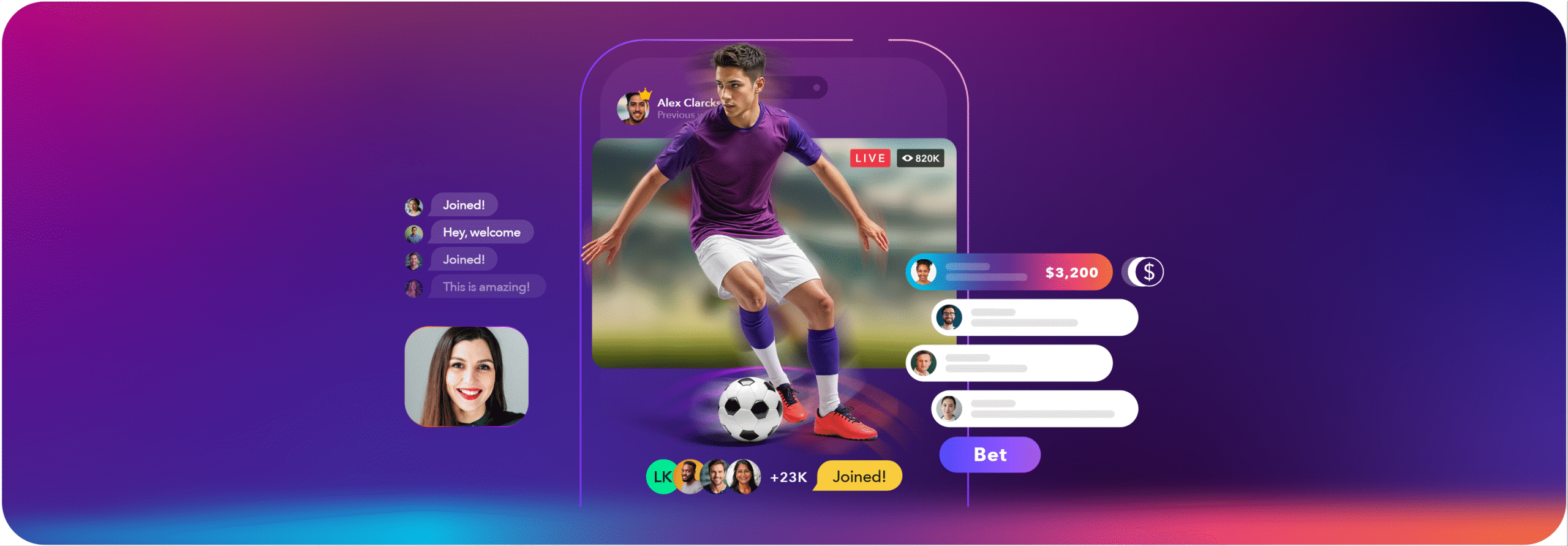
Personalization
Viewer preferences drive personalization in video streaming. These preferences can be self-indicated, observed by artificial intelligence (AI), or predicted with machine learning.
If you’re having trouble imagining what this could look like, think about how mass emails can include customizable fields based on each recipient’s contact information. Specific copy serves as a placeholder with a cue to customize based on the indicated information in the contact’s profile. Video personalization works very similarly to this.
Equipped with personal data on viewers, such as demographics, purchase history, viewing history, and previous web searches, AI-powered algorithms can tailor their individual experiences on your platform accordingly. They can be served pre-loaded content that has been tagged and categorized to be easily served to people with relevant interests, or generative AI can be coupled with predictive analytics to create this experience on an even more granular scale.
Types of personalized interactivity in video streaming
There are several approaches you can take to incorporate personalized interactivity into your streams. With that said, let’s review some common types of personalized interactivity you can tap into to enhance your video content.
Overlays
Starting with the basics, overlays provide a fundamental way to incorporate both personalization and interactivity into your live streams.
Overlays are text or graphics that are situated on top of your video content and have traditionally been used to provide context or emphasize key moments in a stream. This is very easy to incorporate from a production standpoint.
When you add a clickable element, the overlay becomes interactive. You could use overlays to suggest other content that a user may be interested in. Depending on your setup or the timing of the streams, you could even prompt them to open a second player within the same window so they don’t miss a moment of the first stream.
Custom scenes
Custom scenes and storylines are another form of dynamic interactivity that enables you to create more personalized user experiences.
This is more involved than overlays and similar interactivity features, as it can involve producing alternative video options to serve specific segments of your audience.
In practice, this could involve switching to a camera angle that focuses on a viewer’s favorite player, as opposed to more general shots of the game. It could also look like a “choose your own adventure” experience. For example, users can be prompted to choose what a character does next within a storyline. This use case is more common with on-demand content rather than live streaming.
Community interaction
Community connection elements are crucial in many media publishing industries because they help bring the audience together and foster brand loyalty.
From a personalization perspective, this could involve suggesting chat threads or forums to join based on a viewer’s interests. For example, a user located in Baltimore or who regularly watches the Ravens play might be recommended a local fan club to chat with.
Calls-to-action
Calls-to-action (CTAs) are a critical component of many digital media distribution efforts, as they help direct viewers in the right direction and enable publishers to make sales, collect contact information, and more.
CTAs can be personalized to make custom suggestions to different users. For example, if a user has shown interest in a particular artist during a music festival, they could be served a CTA to buy that artist’s merch.
Advertisements
If you’re personalizing the rest of your user experience, it makes sense to serve personalized ads, as well. Fortunately, advertising technology is evolving in tandem with video streaming, where both interactivity and personalization are top priorities.
Server-Guided Ad Insertion (SGAI) is driving innovation in personalized advertising. If you’re not familiar, SGAI is an innovative ad-insertion technique that puts the player in control. It combines the best of Client-Side Ad Insertion (CSAI) and Server-Side Ad Insertion (SSAI), enabling media publishers to create intuitive, scalable advertising experiences on real-time video.
SGAI is known for its L-shaped ad-insertion layout that plays alongside the stream, creating a non-invasive ad experience. Since ads served with this technology are personalizable, they are great for boosting engagement and making them more successful for all parties involved.
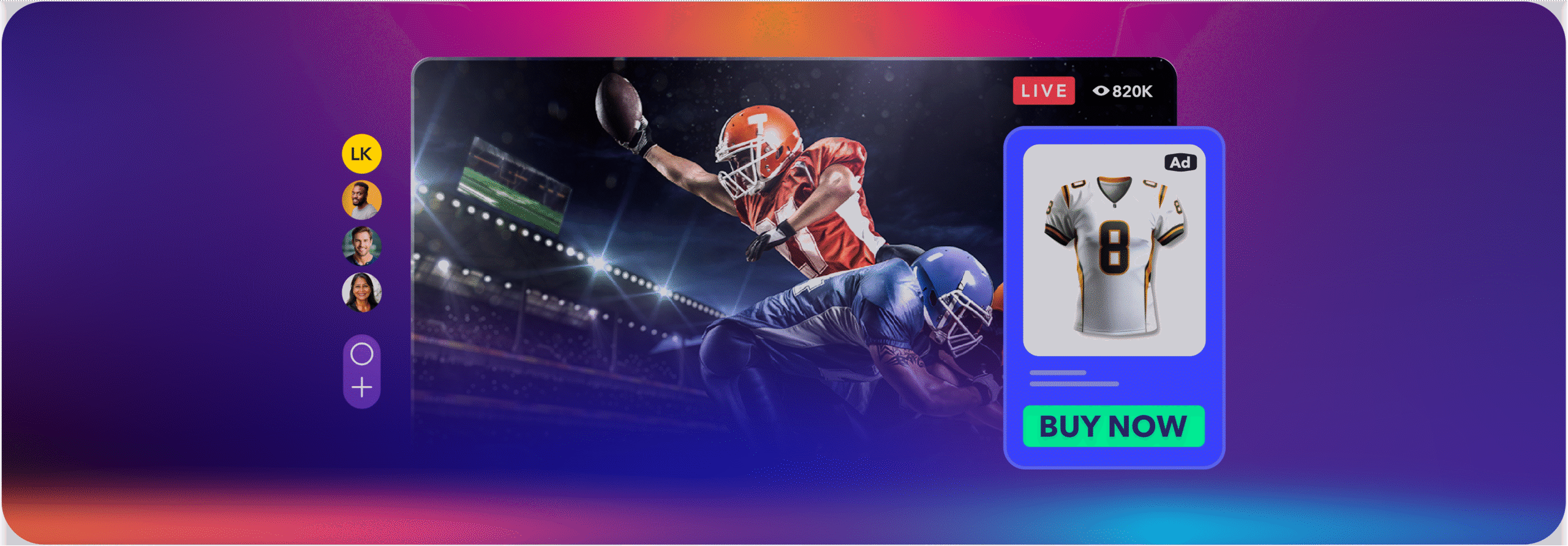
How to add personalized interactivity to your video experiences
Now that you’re a bit more familiar with the types of personalized interactivity you can add to your streaming experiences, it’s time to dive into the nitty-gritty of adding personalized interactivity to your video streams. Here’s how you can bring it all together.
1. Map out the experience
The first step in adding personalized interactivity to your video streams is to define your objectives, allowing you to map your experiences accordingly. Consider the role that interactivity and personalization will play in your specific streaming experience. This should align with your media platform’s broader objectives.
With your goals in mind, it’s time to map out the experience. At what points in the viewer journey will interactivity be incorporated? How immersive with interactivity be? How will you personalize the experience?
2. Build your tech stack
Once you have a clear idea of what you’re setting out to accomplish, you’ll need to find the right tools to support your endeavors.
The foundation of every great streaming experience is a robust streaming solution. To maximize interactivity and engagement, you’ll need a solution that offers low-latency streaming. In some use cases, you’ll even need real-time streaming.
This software should integrate seamlessly with a production tool that offers support for the interactivity and customization functionality you’re looking for. CRM integrations also come in handy for content personalization.
4. Develop your platform
If you already have a streaming platform, this step requires integrating and configuring your chosen interactivity tools. This is where having the right team becomes crucial.
The support you need at this stage depends on the platforms where your experiences will be available. For example, if you’re creating a mobile app, you’ll need dedicated mobile developers.
5. Promote your interactive experiences
Once you’ve successfully configured your streaming platform to feature personalized interactivity, it’s time to let your audience know about this new and improved functionality.
In-platform pop-ups or blurbs are a great way to draw attention to your interactive features. You can also use any other channels of communication or digital marketing techniques that you’ve found successful for relaying info to your audience.
Final thoughts
Interactivity is a powerful way to add more dimension to your viewer experiences, and personalizing this interactivity is an excellent way to take that to the next level.
If you’re looking for the perfect solution to marry interactivity and personalization in your video streaming experiences, Dolby OptiView is here for you. Our highly customizable real-time streaming solution enables you to integrate the tools you need to make your streams interactive, personalized, and more engaging.
Contact us today to learn how you can leverage Dolby OptiView to bring your personalized interactive streaming experience to life.


